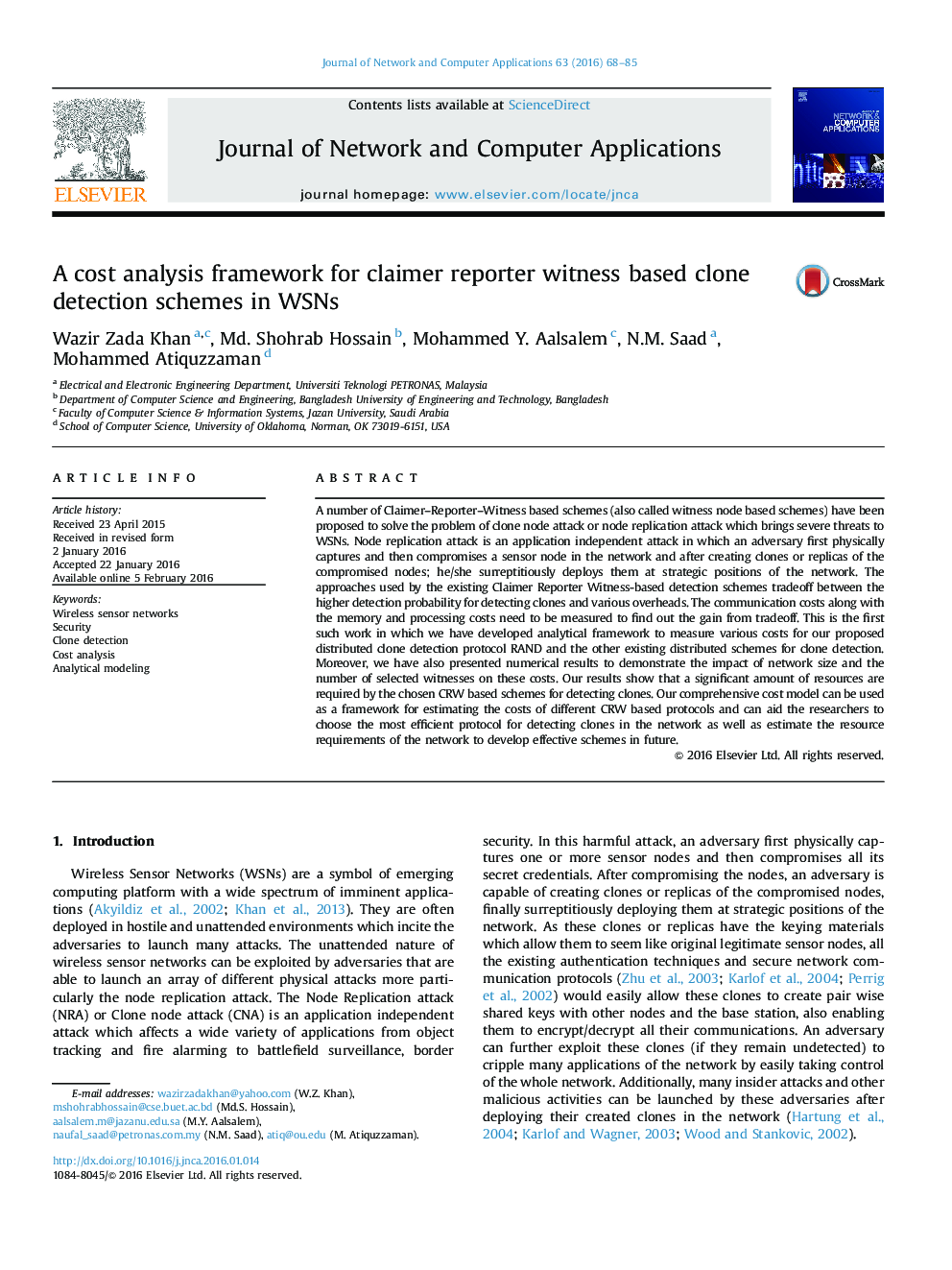| Article ID | Journal | Published Year | Pages | File Type |
|---|---|---|---|---|
| 457117 | Journal of Network and Computer Applications | 2016 | 18 Pages |
A number of Claimer–Reporter–Witness based schemes (also called witness node based schemes) have been proposed to solve the problem of clone node attack or node replication attack which brings severe threats to WSNs. Node replication attack is an application independent attack in which an adversary first physically captures and then compromises a sensor node in the network and after creating clones or replicas of the compromised nodes; he/she surreptitiously deploys them at strategic positions of the network. The approaches used by the existing Claimer Reporter Witness-based detection schemes tradeoff between the higher detection probability for detecting clones and various overheads. The communication costs along with the memory and processing costs need to be measured to find out the gain from tradeoff. This is the first such work in which we have developed analytical framework to measure various costs for our proposed distributed clone detection protocol RAND and the other existing distributed schemes for clone detection. Moreover, we have also presented numerical results to demonstrate the impact of network size and the number of selected witnesses on these costs. Our results show that a significant amount of resources are required by the chosen CRW based schemes for detecting clones. Our comprehensive cost model can be used as a framework for estimating the costs of different CRW based protocols and can aid the researchers to choose the most efficient protocol for detecting clones in the network as well as estimate the resource requirements of the network to develop effective schemes in future.
